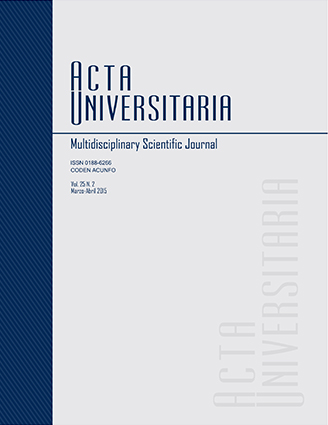Geographical distribution of the species: a concept review
Published 2015-05-15
Keywords
- Geographic distribution concept,
- metapopulation lineage,
- geographic distribution implications,
- patterns,
- methods to approximation.
- Concepto área de distribución de las especies,
- linaje metapoblacional,
- implicaciones del área de distribución,
- patrones,
- métodos de aproximación.
How to Cite
Abstract
The geographical distribution is an important concept in biological sciences, however in some cases it has been interpreted inadequately. We consider that the unified species concept can help to clarify the geographical distribution concept, since incorporate the spatial dimension because the species are a separately evolving metapopulation lineage. The geographical distribution is defined as that fraction of the geographical space where a species is present and interacts in unephemeral way with the ecosystem. The presence or absence of the species in the geographic space is defined by biogeography, physiology, and ecological factors. Geographical distribution is an attribute difficult to estimate, nevertheless, it has described some patterns concerning to size, shape and boundaries. Currently, there are some methods that allow to carry out spatially explicit accurate hypothesis about the geographical distribution of the species.
References
Beebee, T. J. C. (1995). Amphibian breeding and climate. Nature, 374, 219-220.
Brown, J. H. (2003). Macroecología. México: Fondo de Cultura Económica.
Brown, D. E. & López, G. C. A. (2001). Borderland Jaguars. Utah: The University of Utah Press.
Cracraft, J. (1983). Species concept and speciation analysis. Current Ornithology, 1, 159-187.
Darwin, C. (1859). On the origins of species by means of natural selection. London: Murray.
De Queiroz, K. (2005). Different species problems and their resolution. BioEssays, 27, 1263-1269.
Dingle, H. & Drake, V. A. (2007). What is migration? BioScience, 57(2), 113-121.
Dobzhansky, T. (1950). Evolution in the tropics. American Scientist, 38, 209-221.
Friedman, J. H. (1991). Multivariate adaptive regression splines. Annals of Statistics, 19, 1-141.
Good, R. D. (1931). A theory of plant geography. The New Phytologist, 30, 149-171.
Grinnell, J. (1917). The niche-relationships of the California Thrasher. Auk, 34, 427-433.
Hall, E. R. (1981). The mammals of North America. New York: John Wiley and Sons.
Holt, R. D. & Keitt, T. H. (2005). Species’ borders: a unifying theme in ecology. Oikos, 108, 3-6.
Mayr, E. (1942). Systematics and the origin of the species. New York: Columbia University Press.
Parmesan, C. (1996). Climate and species’ range. Nature, 382, 765-766.
Rzedowski, J. (1978). Vegetación de México. México: Limusa.
Vapnik, V. (1995). The nature of statistical learning theory. New York: Springer-Verlag.
Wiens, J. A. (1989). Spatial scaling in ecology. Functional Ecology, 3(4), 385-397.

